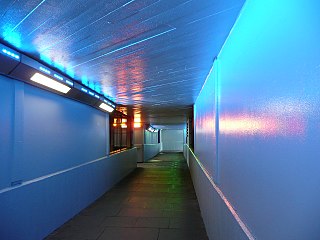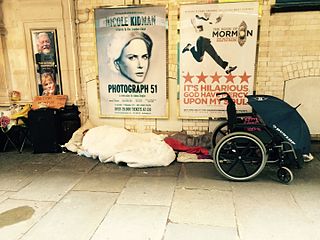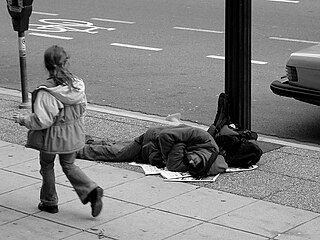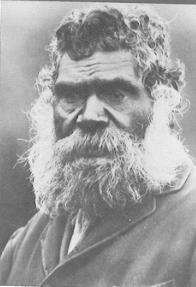Related Research Articles

A headstone, tombstone, or gravestone is a stele or marker, usually stone, that is placed over a grave. It is traditional for burials in the Christian, Jewish, and Muslim religions, among others. In most cases, it has the deceased's name, date of birth, and date of death inscribed on it, along with a personal message, or prayer, but may contain pieces of funerary art, especially details in stone relief. In many parts of Europe, insetting a photograph of the deceased in a frame is very common.

The Quintinshill rail disaster was a multi-train rail crash which occurred on 22 May 1915 outside the Quintinshill signal box near Gretna Green in Dumfriesshire, Scotland. It resulted in the deaths of over 200 people and remains the worst rail disaster in British history.

During the early stages of the Iraq War, members of the United States Army and the Central Intelligence Agency committed a series of human rights violations and war crimes against detainees in the Abu Ghraib prison in Iraq, including physical abuse, sexual humiliation, physical and psychological torture, and rape, as well the killing of Manadel al-Jamadi and the desecration of his body. The abuses came to public attention with the publication of photographs of the abuse by CBS News in April 2004. The incidents caused shock and outrage, receiving widespread condemnation within the United States and internationally.
The Rough Sleepers Initiative was an initiative by the Government of the United Kingdom's Rough Sleepers Unit (RSU), which resulted from a campaign by St Mungo's, a London homelessness charity, called National Sleep Out Week. It was designed to accommodate homeless people with emergency hostels.

In England, local authorities have duties to homeless people under Part VII of the Housing Act 1996 as amended by the Homelessness Act 2002. There are five hurdles which a homeless person must overcome in order to qualify as statutory homeless. If an applicant only meets the first three of these tests Councils still have a duty to provide interim accommodation. However an applicant must satisfy all five for a Council to have to give an applicant "reasonable preference" on the social housing register. Even if a person passes these five tests councils have the ability to use the private rented sector to end their duty to a homeless person.

Cardboard City was the name for an informal settlement consisting of temporary cardboard shelters that occupied a site near Waterloo station in London, England. Cardboard City, was lived in by homeless people from around 1978 until 1998, and was eventually closed after a High Court order led to its redevelopment.

Homelessness in the United Kingdom is measured and responded to in differing ways in England, Scotland, Wales and Northern Ireland, but affects people living in every part of the UK's constituent countries. Most homeless people have at least a modicum of shelter but without any security of tenure. Unsheltered people, "rough sleepers", are a small minority of homeless people.

Layton cemetery is a graveyard located at Talbot Road in Blackpool, Lancashire in England. It was opened in 1873 when Blackpool parish church was replete with burying. The site encompasses 30 acres (120,000 m2), having been regularly expanded during its history. It is administered by Blackpool Council. A number of memorials in the cemetery are executed in Portland stone.

Homelessness or houselessness – also known as a state of being unhoused or unsheltered – is the condition of lacking stable, safe, and functional housing. The general category includes disparate situations, such as living on the streets, moving between temporary accommodation such as family or friends, living in boarding houses with no security of tenure, and people who leave their domiciles because of civil conflict and are refugees within their country.

Anti-homelessness legislation can take two forms: legislation that aims to help and re-house homeless people; and legislation that is intended to send homeless people to homeless shelters compulsorily, or to criminalize homelessness and begging.

A bed base, sometimes called a foundation, is the part of a bed that supports the mattress. The bed base can itself be held in place and framed by the bedstead. In the United States, box-spring bed bases are very common. In Europe, sprung slats are much more common.

Poltpalingada Booboorowie was a prominent Aboriginal man of the Thooree clan of the Ngarrindjeri nation, who lived among the community of fringe dwellers in Adelaide, South Australia during the 1890s. He was a well-known and popular figure among Adelaide residents, who knew him as Tommy Walker, and his antics and court appearances were reported upon regularly in the newspapers.

The Landau Commission was a three-man Commission set up by the Israeli Government in 1987 following a long-running scandal over the deaths of two Palestinian prisoners in custody and the wrongful conviction of a Circassian IDF officer. The Commission, headed by former Supreme Court Justice Moshe Landau, found that the GSS interrogators routinely used physical force during the interrogation of prisoners and then committed perjury at subsequent trials. In its conclusion, approved by Cabinet in November 1987, it lay down guidelines for the use of a "moderate measure of physical pressure". The details of the recommended methods were described in the classified appendix to the report. In 1994 the UN Committee Against Torture stated: "The Landau Commission Report, permitting as it does 'moderate physical pressure' as a lawful mode of interrogation, is completely unacceptable to this Committee."

Louise Casey, Baroness Casey of Blackstock,, is a British government official working in social welfare.

The St Mungo Community Housing Association, working as St Mungo's, is a charity registered in England to help homeless people.

The 1917 Guatemala earthquakes were a sequence of tremors that lasted from 17 November 1917 through 24 January 1918. They gradually increased in intensity until they almost completely destroyed Guatemala City and severely damaged the ruins in Antigua Guatemala that had survived the 1773 Guatemala earthquakes.
Homelessness in Switzerland is a known social issue, however, there are few estimates as to the number of Swiss people affected. Homelessness is less visible in Switzerland than in many other Western countries. The majority of homeless people in Geneva are Swiss or French, with a minority from other countries.
The Whitechapel Centre is a homeless day-centre and registered charity in Langsdale Street, Liverpool, England. Established in 1975, it works with people in the Liverpool and Sefton areas, offering advice and information about housing. The centre is open 12 hours a day for 365 days a year. From 2018 until the COVID-19 pandemic in March 2020, the Whitechapel Centre also offered a night shelter, Labre House.

Elaheh Mohammadi is an Iranian journalist who reports on society and women's issues for the daily Ham-Mihan newspaper. She has also worked with state-controlled media outlets such as Shahrvand, Khabar Online and Etemad Online in the past years. Time magazine named her one of the 100 most influential people in the world in 2023.
Setiabudi 13 Case is a cold case of unsolved murder of an unidentified mutilated man found on 23 November 1981 on the sidewalk of Jalan Jenderal Sudirman, Setiabudi, South Jakarta. Due to the extreme violence and uncertainty of the case, this case is considered as the first mutilation case in modern Indonesian crime history, one of the most gruesome, and one of the most mysterious cases in Indonesia. The case is called "Setiabudi 13" since the mutilated body was found in 13 pieces and was found in Setiabudi district, South Jakarta.
References
- ↑ Scandal of Iran’s grave dwellers sparks online criticism of authorities Scandal of Iran’s grave dwellers sparks online criticism of authorities
- ↑ Photographs of homeless 'grave dwellers' shock Iranians Photographs of homeless 'grave dwellers' shock Iranians>
- ↑ Photographs of homeless Photographs of homeless
- ↑ 3- Grave dwellers of Nasirabad Cemetery: They took away our only grave by beating us.3- Grave dwellers of Nasirabad Cemetery: They took away our only grave by beating us.
- ↑ Iran's 'Grave Sleepers' Prompt Calls For Action Iran's 'Grave Sleepers' Prompt Calls For Action
- ↑ Photographs of homeless Photographs of homeless